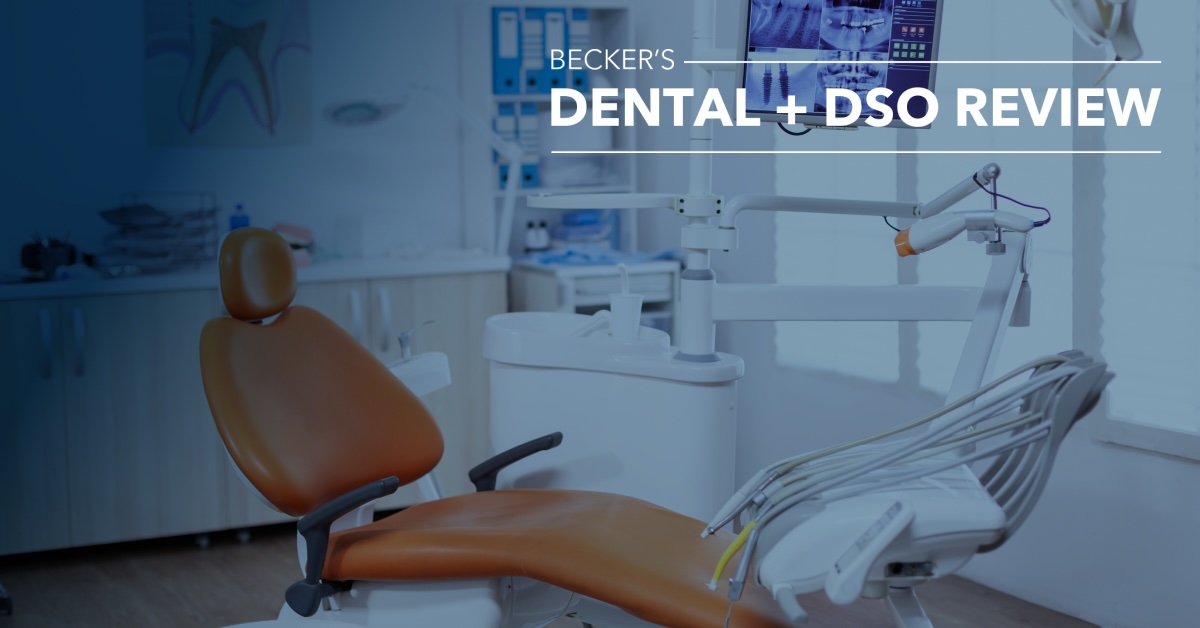Michael Honeycutt, a Director within our FP&A practice was published on Becker’s Dental + DSO Review.
The full article is featured below.
As seen on Becker’s Dental + DSO Review
Most organizations rely on key performance indicators (KPIs) for driving strategic decisions, optimizing operations, and improving financial outcomes, and dental service organizations (DSOs) are no different.
While traditional metrics like patient volume and production per chair are vital, other KPIs offer valuable yet often overlooked insights into a practice’s performance. We will explore three underutilized KPIs: Patient Retention Rate, Revenue per Procedure, and Clean Claim Acceptance Rate, each of which provides actionable insights that align with current industry trends and strategic priorities within DSOs.
Patient Retention Rate: A Pillar of Sustainable Growth
Strategic Relevance: Patient Retention Rate determines the percentage of returning patients for ongoing care over a given period. With patient acquisition costs continuing to rise in today’s competitive healthcare environment, retaining existing patients is crucial for sustainable growth. Research shows that retaining a patient can be five to seven times less expensive than acquiring a new one, emphasizing the importance of this metric for long-term financial stability.
Industry Trend Alignment: The shift towards value-based care models places patient satisfaction and long-term outcomes at the forefront, making retention even more vital. A high Patient Retention Rate often correlates with increased patient satisfaction, improved clinical outcomes, and more patient referrals, contributing to organic growth without significant additional marketing costs.
Actionable Insights: To enhance Patient Retention Rate, DSOs should segment their patient base into categories such as New, Active, Inactive, and Lost Patients. This segmentation allows for targeted retention strategies, such as personalized follow-up communication and loyalty programs, which can re-engage patients at risk of attrition.
Revenue per Procedure: Dissecting the Price-Volume Mix for Strategic Financial Planning
Strategic Relevance: Revenue per Procedure (RPP) measures the average net revenue generated from each procedure performed. Unlike broader metrics such as total production or patient volume, RPP offers a granular view of a practice’s financial performance, focusing on specific services. This KPI offers valuable insights into the interplay between pricing, service mix, and volume—a critical analysis for strategic pricing decisions and resource allocation.
Industry Trend Alignment: With increasing pressure on margins in the healthcare industry, understanding the revenue generated per procedure is essential. This insight allows DSOs to identify their most profitable services, adjust pricing strategies, and optimize the service mix to enhance overall profitability. The move towards personalized and precision medicine further emphasizes the importance of having a deep understanding of revenue per procedure to tailor offerings that meet patient needs while maintaining financial viability.
Actionable Insights: DSOs should regularly benchmark RPP against industry standards and historical data to identify trends and variances. This analysis can inform decisions related to pricing adjustments, service offerings, and payor negotiations, ultimately leading to more effective financial planning and improved profitability.
Clean Claim Acceptance Rate: Safeguarding Cash Flow Health in a Complex Revenue Cycle
Strategic Relevance: Clean Claim Acceptance Rate (CCAR) measures the percentage of insurance claims that are accepted without needing additional information or resubmission. Given the complexity of healthcare billing and the critical role of cash flow in maintaining operations, a high CCAR is essential for minimizing disruptions in revenue streams. This KPI directly impacts a practice’s financial health, as denied or delayed claims can lead to significant cash flow challenges and increased administrative costs.
Industry Trend Alignment: Ongoing challenges in revenue cycle management, including constant changes in billing codes and insurance policies, make maintaining a high CCAR more crucial than ever. As healthcare organizations strive to improve efficiency and reduce overhead, optimizing claim acceptance processes can free up resources that can be redirected towards patient care and strategic growth initiatives.
Actionable Insights: To enhance CCAR, DSOs should invest in staff training focused on coding accuracy and claim submission processes. Additionally, using robust practice management software that flags potential issues before submission can prevent denials, ensuring a smoother and more predictable revenue cycle. Regular audits of claim denials can also provide insights into systemic issues that need to be addressed to maintain high CCAR.
Leveraging KPIs for Strategic Advantage
At E78, we recognize the significant impact that incorporating often-overlooked KPIs, such as Patient Retention Rate, Revenue per Procedure, and Clean Claim Acceptance Rate, can have on our clients’ performance. These valuable metrics align with current healthcare industry trends, like the shift towards value-based care and efficient revenue cycle management, providing a well-rounded understanding of operational and financial health, and guiding data-driven decision-making for business growth.
Focusing on these KPIs fosters long-term growth through patient loyalty, strategic financial planning, and price-volume mix analysis. Moreover, they contribute to financial stability and reduce the risk of cash flow disruptions by enhancing revenue cycle management efficiency.
By actively tracking and optimizing these KPIs, DSOs can not only improve their performance but also establish a solid foundation for continued success.


